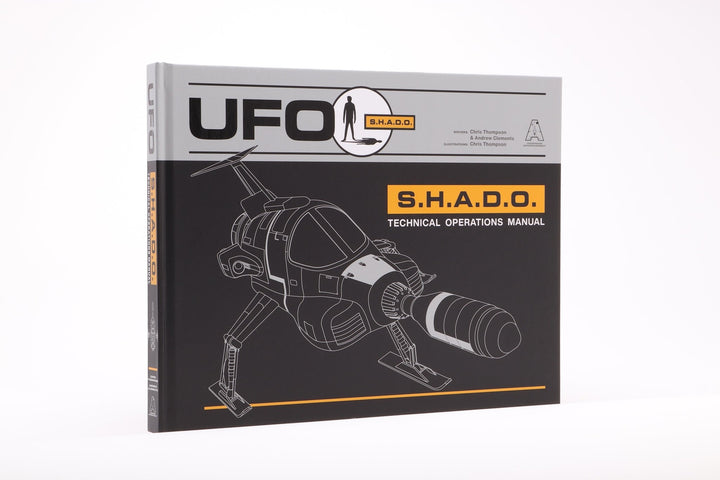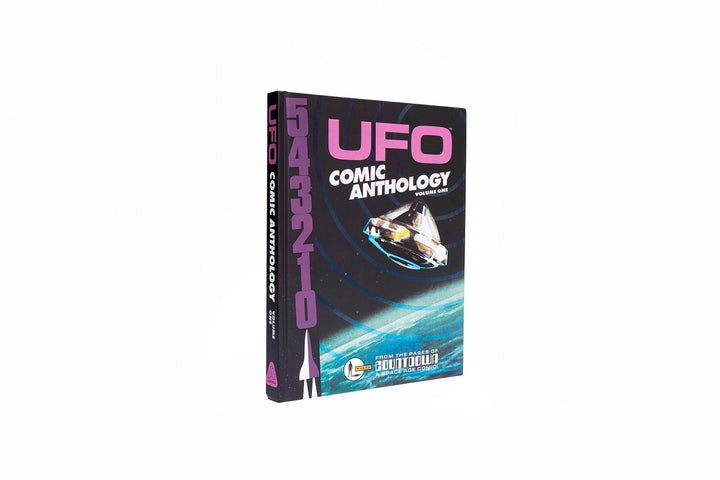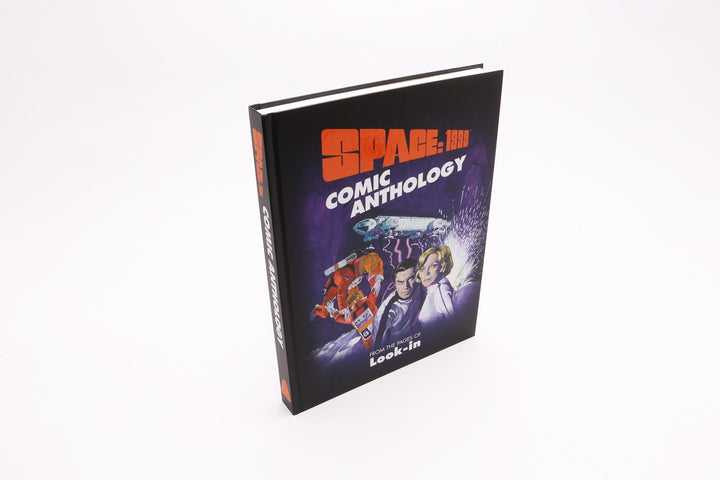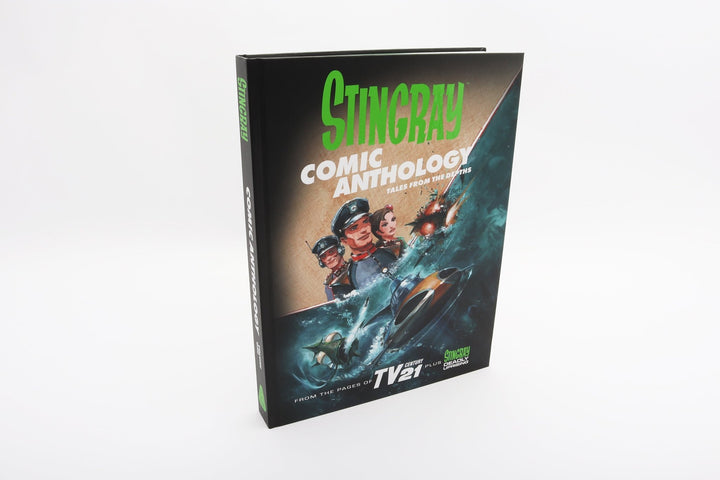Thunderbird 3 Re-imagined!
3 Min read
Share
3 Min read
Share

Thunderbird 3 Re-imagined!
International Rescue's space rescue rocket is an incredible piece of design and engineering and is certainly an iconic favourite with fans of Thunderbirds. But ask yourself a question: have you ever wanted to see Thunderbird 3 re-imagined as more of a NASA-style spacecraft? Harriet Lansley tells us how she came up with this rather unique university project... When presented with my final model design project at university I decided to revisit my childhood. I grew up watching children’s television from the 1960s and a key part of that was the work of Gerry Anderson. As a child I was particularly excited by the spacecraft in Thunderbirds and the idea of space travel. I was fascinated by the fact that they were all models, created for the world they inhabited. At the end of my education I realised I was almost lead into model making and that it was important to honour where my passion for model making began.
I decided to focus my project on the design of Thunderbird 3 and re-imagine this for a modern context. It was vital for me to make sure the integrity of the original design was not lost. To ensure this I started by studying the work of Gerry Anderson and Derek Meddings. I then pushed my design in a new direction by looking at the design of the Saturn V from the late 1960s. It was important to me that elements of my design remained recognisable so the audience could relate to the alternative visual elements I introduced. This meant that features such as the central engine and docking collar of the original Thunderbird 3 remained, whilst adding recognisable cues from the Saturn V design.
When presented with my final model design project at university I decided to revisit my childhood. I grew up watching children’s television from the 1960s and a key part of that was the work of Gerry Anderson. As a child I was particularly excited by the spacecraft in Thunderbirds and the idea of space travel. I was fascinated by the fact that they were all models, created for the world they inhabited. At the end of my education I realised I was almost lead into model making and that it was important to honour where my passion for model making began.
I decided to focus my project on the design of Thunderbird 3 and re-imagine this for a modern context. It was vital for me to make sure the integrity of the original design was not lost. To ensure this I started by studying the work of Gerry Anderson and Derek Meddings. I then pushed my design in a new direction by looking at the design of the Saturn V from the late 1960s. It was important to me that elements of my design remained recognisable so the audience could relate to the alternative visual elements I introduced. This meant that features such as the central engine and docking collar of the original Thunderbird 3 remained, whilst adding recognisable cues from the Saturn V design.
 My design process began by sketching many different ideas, synthesising them down to a cohesive design and then translating these into CAD software. This meant that I could easily manipulate different aspects of my design and elements which could later be 3D printed. For the body of my model I used a range of processes including turning and then milling chemiwood. I selected this resin based modelling board as it can be easily machined. As I was using both traditional and digital processes I could take full advantage of the strengths of each to produce a quality model with an easy final construction stage. Components were designed to slide into one another and as a result this added strength to the final model. This approach can be seen within the fabrication of the recognisable main engine where I first 3D printed a single fin which was moulded and then cast to create twenty identical pieces. The central section was turned using a lathe, making sure the base had a pocket to slide over the piece below. Each fin was attached to the core and the collar was finally placed on top, creating the engine that we all know.
My design process began by sketching many different ideas, synthesising them down to a cohesive design and then translating these into CAD software. This meant that I could easily manipulate different aspects of my design and elements which could later be 3D printed. For the body of my model I used a range of processes including turning and then milling chemiwood. I selected this resin based modelling board as it can be easily machined. As I was using both traditional and digital processes I could take full advantage of the strengths of each to produce a quality model with an easy final construction stage. Components were designed to slide into one another and as a result this added strength to the final model. This approach can be seen within the fabrication of the recognisable main engine where I first 3D printed a single fin which was moulded and then cast to create twenty identical pieces. The central section was turned using a lathe, making sure the base had a pocket to slide over the piece below. Each fin was attached to the core and the collar was finally placed on top, creating the engine that we all know.
 The construction stage and final finishing work were particularly exciting parts of the project for me as I could slowly start to see my design being fully realised. I made sure to source an orange paint which truly reflected the colour of the original Thunderbird 3 design. When I finally ran the vinyl lettering up the side of my ship everything came together. It was no longer a ship with a mismatch of elements from different spacecraft, but now a Thunderbird and no doubt fit for Alan, John and Scott Tracy.
The construction stage and final finishing work were particularly exciting parts of the project for me as I could slowly start to see my design being fully realised. I made sure to source an orange paint which truly reflected the colour of the original Thunderbird 3 design. When I finally ran the vinyl lettering up the side of my ship everything came together. It was no longer a ship with a mismatch of elements from different spacecraft, but now a Thunderbird and no doubt fit for Alan, John and Scott Tracy.

Our thanks to Harriet for this fascinating glimpse into the redesign of one of television's best-loved spacecraft!
Have you ever incorporated a Gerry Anderson theme into a university or college project? If so we'd love to hear about it!
For all the very latest Gerry Anderson news and updates, be sure to subscribe to our weekly email newsletter!




![Fireball XL5 World Space Patrol Technical Operations Manual [HARDCOVER BOOK] - The Gerry Anderson Store](http://gerryanderson.com/cdn/shop/files/fireball-xl5-world-space-patrol-technical-operations-manual-hardcover-book-290050.jpg?v=1711729272&width=720)



![Stingray Comic Anthology Volume Two – Battle Lines [HARDCOVER] - The Gerry Anderson Store](http://gerryanderson.com/cdn/shop/files/stingray-comic-anthology-volume-two-battle-lines-hardcover-107681.jpg?v=1738856151&width=720)
![Space: 1999 and UFO Book Bundle - Signed Limited Editions [HARDCOVER NOVELS] - The Gerry Anderson Store](http://gerryanderson.com/cdn/shop/files/space-1999-and-ufo-book-bundle-signed-limited-editions-hardcover-novels-589446.jpg?v=1718836845&width=720)
![Stingray WASP Technical Operations Manual Special Limited Edition [HARDCOVER BOOK] - The Gerry Anderson Store](http://gerryanderson.com/cdn/shop/files/stingray-wasp-technical-operations-manual-special-limited-edition-hardcover-book-991914.jpg?v=1732922875&width=720)
![Stingray: The Titanican Stratagem – Signed Limited Edition [HARDCOVER NOVEL] - The Gerry Anderson Store](http://gerryanderson.com/cdn/shop/files/stingray-the-titanican-stratagem-signed-limited-edition-hardcover-novel-129251.jpg?v=1740558711&width=720)






